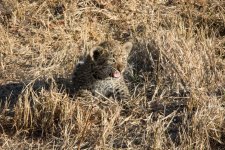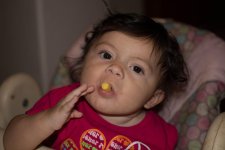heathramos
Senior Member
I took quite a few pictures on my last vacation and I'm not satisfied with how some came out.
To me, at least, it seems like they are not completely in focus and I want to know if it is a setting I'm choosing or my skill level.
The pictures look okay if you don't zoom in but if you do, you notice it.
I have taken pictures that are clear so it is possible for me to do.
Maybe it is just really hard to do if I'm zooming all the way (300mm on my lens)?
Or maybe I need a slower shutter speed?
Keep in mind that I'm using a single point for focus.
Here is a pic of a baby leopard that doesn't seem to be in focus when I zoom in:

The following picture seems clear even if I zoom in (different settings, lens and lighting though)

I usually just use shutter priority, take a pic and double check the histogram to make sure nothing gets clipped. I don't really put too much thought beyond that at this point.
I also choose single point focus to prevent it from focusing on something else, like a closer object.
Should I choose a different focus setting?
To me, at least, it seems like they are not completely in focus and I want to know if it is a setting I'm choosing or my skill level.
The pictures look okay if you don't zoom in but if you do, you notice it.
I have taken pictures that are clear so it is possible for me to do.
Maybe it is just really hard to do if I'm zooming all the way (300mm on my lens)?
Or maybe I need a slower shutter speed?
Keep in mind that I'm using a single point for focus.
Here is a pic of a baby leopard that doesn't seem to be in focus when I zoom in:

The following picture seems clear even if I zoom in (different settings, lens and lighting though)

I usually just use shutter priority, take a pic and double check the histogram to make sure nothing gets clipped. I don't really put too much thought beyond that at this point.
I also choose single point focus to prevent it from focusing on something else, like a closer object.
Should I choose a different focus setting?
